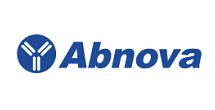ATF6 alpha monoclonal antibody, clone 37-1



* The price is valid only in USA. Please select country.
-
More Files
- More Functions
-
Specification
Product Description
Mouse monoclonal antibody raised against recombinant human ATF6 alpha.
Sequence
Recombinant GST fusion protein corresponding to amino acids fragment at N-terminus of human ATF6 alpha.
Host
Mouse
Reactivity
Human, Mouse
Specificity
This antibody reacts to human and mouse ATF6 alpha.
Form
Liquid
Purification
Chromatography Method
Isotype
IgG1 kappa
Recommend Usage
Western Blot (1:500 - 1000)
The optimal working dilution should be determined by the end user.Storage Buffer
In PBS (50% glycerol).
Storage Instruction
Stored at -20°C.
Aliquot to avoid repeated freezing and thawing. -
Applications
Western Blot (Cell lysate)
(Right)
Western Blot analysis of human Hela cell extracts: Lane 1: untreated; Lane 2: DTT: 1mM dithiothreitol (reducing reagent) for 1 h; Lane 3: Tm: 2 g/ml tunicamycin (inhibitor of N-glycosylation) for 3 h; Lane 4: Tm: 2 g/ml tunicamycin (inhibitor of N-glycosylation) for 7 h with ATF6 alpha monoclonal antibody, clone 37-1 (Cat# MAB19823).
*The upper arrow denotes an unglycosylated form of pATF6 alpha (P); the bottom arrow denotes pATF6 alpha (N). ATF6 is constitutively expressed as pATF6 alpha (P) ( ~90kDa protein), and converted to pATF6 alpha (N) (>50-kDa protein) in ER-stressed cells.
(Left)
Western Blot analysis of mouse NIH3T3 cell extracts: Lane 1: untreated; Lane 2: DTT: 1mM dithiothreitol (reducing reagent) for 1 h; Lane 3: Tm: 2 g/ml tunicamycin (inhibitor of N-glycosylation) for 3 h; Lane 4: Tm: 2 g/ml tunicamycin (inhibitor of N-glycosylation) for 7 h with ATF6 alpha monoclonal antibody, clone 37-1 (Cat# MAB19823).
*The upper arrow denotes an unglycosylated form of pATF6 alpha (P); the bottom arrow denotes pATF6 alpha (N). ATF6 is constitutively expressed as pATF6 alpha (P) ( ~90kDa protein), and converted to pATF6 alpha (N) (>50-kDa protein) in ER-stressed cells. -
Gene Info — ATF6
Entrez GeneID
22926Protein Accession#
P18850Gene Name
ATF6
Gene Alias
ATF6A
Gene Description
activating transcription factor 6
Omim ID
605537Gene Ontology
HyperlinkGene Summary
ATF6 is an endoplasmic reticulum (ER) stress-regulated transmembrane transcription factor that activates the transcription of ER molecules.[supplied by OMIM
Other Designations
OTTHUMP00000025585|activating transcription factor 6 alpha
-
Interactome
-
Disease
- +1-909-264-1399
+1-909-992-0619
Toll Free : +1-877-853-6098 - +1-909-992-3401
- sales@abnova.com
















